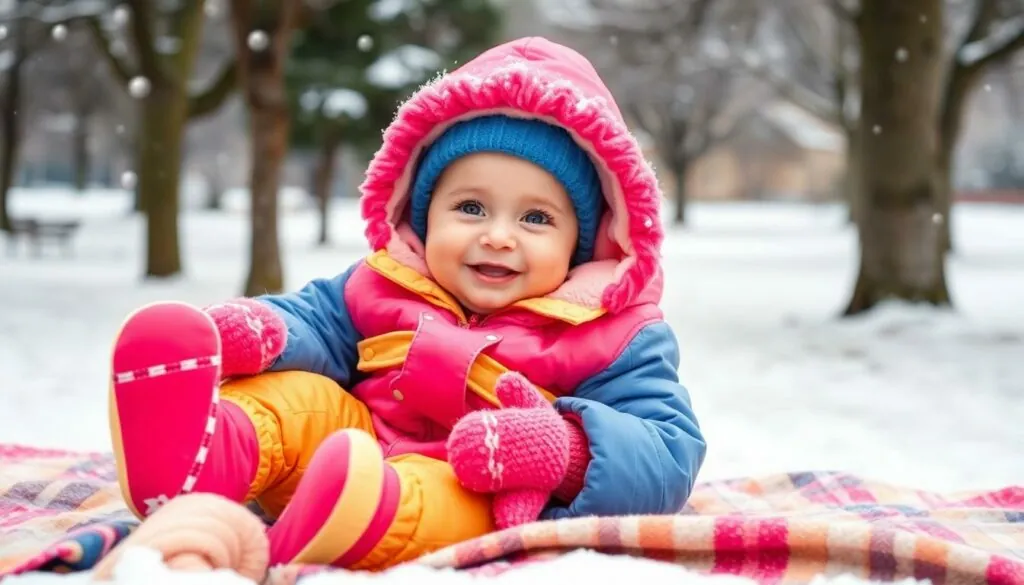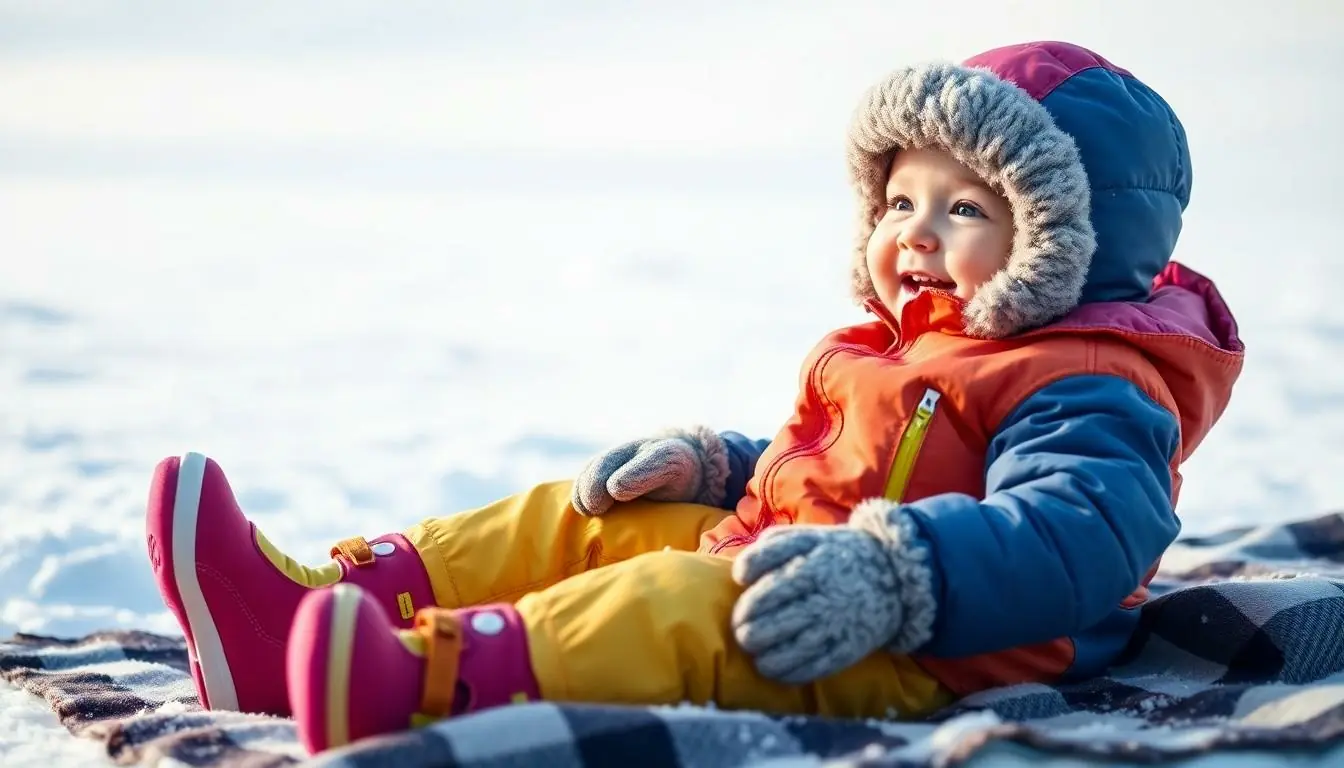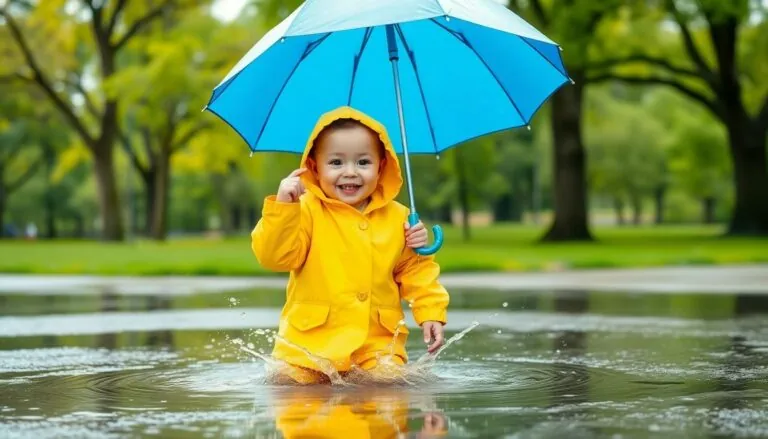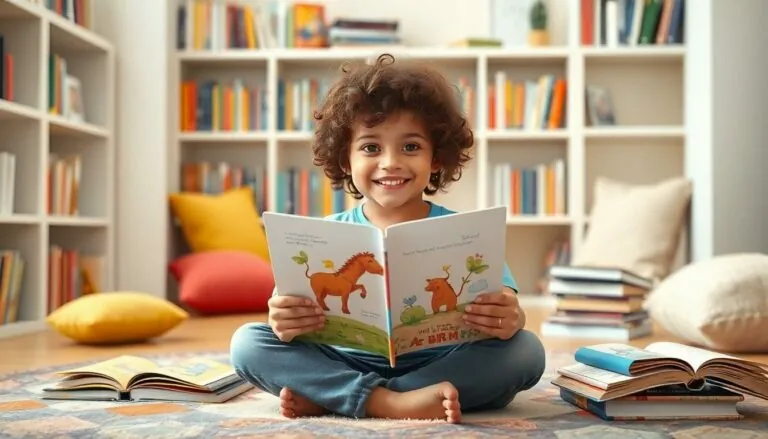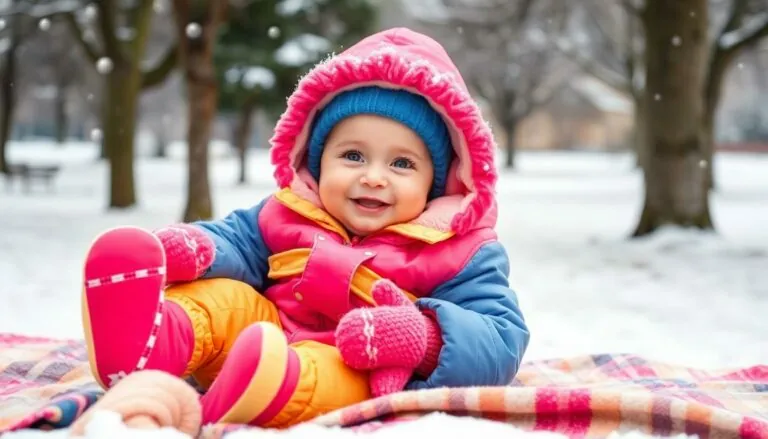Table of Contents
ToggleWhen winter rolls in, it’s not just the snowmen who need to bundle up. Babies are ready to join in on the frosty fun, but they can’t do it without the right gear. Think of baby snow gear as the superhero cape for your little one, designed to keep them warm and cozy while they explore the winter wonderland.
Overview of Baby Snow Gear
Baby snow gear includes several essential items designed to keep infants warm and protected in wintry conditions. Insulated snowsuits form the foundation of winter outfits, providing a barrier against cold air and moisture. These outfits usually feature soft linings and adjustable hoods for added comfort.
Boots designed specifically for babies play a crucial role in maintaining warmth. Waterproof materials keep little feet dry, while non-slip soles ensure safety on icy surfaces. Mittens and hats are equally important; they prevent heat loss and protect sensitive skin from harsh winds.
Layering becomes vital when dressing a baby for snow activities. Parents might combine thermal layers with outerwear to achieve optimal insulation without bulkiness. Fabrics such as fleece and wool are common choices for base layers, offering comfort and warmth.
Accessories like blankets add an extra layer of warmth during outings. Special snow blankets are often windproof and designed to trap heat effectively. Additionally, car seat covers provide warmth while keeping babies snug in their seats.
Selecting the right size is crucial for effective snow gear. Gear should fit snugly without being restrictive, allowing for easy movement. Brands typically offer size charts to help parents choose appropriately.
Safety considerations also come into play. Gear should meet safety standards, using non-toxic materials and avoiding choking hazards. Regularly checking the condition of winter gear ensures it remains safe and functional.
With the right baby snow gear, infants can enjoy winter activities comfortably and safely, exploring the snowy world around them with joy.
Types of Baby Snow Gear
Choosing the right baby snow gear involves selecting appropriate clothing and accessories for winter play. Each type of gear plays a crucial role in ensuring comfort and safety during cold weather activities.
Clothing Essentials
Insulated snowsuits provide an effective barrier against cold air and moisture. These suits contain soft linings that enhance comfort while featuring adjustable hoods for added protection. Thermal layers, such as long-sleeve tops and pants, deliver extra warmth when worn beneath outer layers. Baby boots protect little feet from snow and slush, made from waterproof materials and equipped with non-slip soles for secure footing. Hats and mittens help maintain body heat, covering sensitive areas that lose warmth easily. Selecting properly sized clothing ensures babies can move freely, enhancing their ability to explore winter landscapes.
Accessories for Snow Play
Windproof blankets keep babies cozy during outdoor outings. These blankets wrap securely around infants in strollers or carriers, providing essential warmth in chilly conditions. Car seat covers designed for winter use accommodate safety features while adding insulation. Additionally, snow goggles shield young eyes from bright sunlight reflecting off the snow. Hand warmers offer extra heat, ideal for chilly hands during playtime. Prioritizing the right accessories enhances the winter experience, allowing babies to enjoy snow play comfortably and safely.
Choosing the Right Baby Snow Gear
Selecting appropriate baby snow gear ensures warmth and safety during winter outings. Key factors include size, fit, material, and insulation.
Size and Fit Considerations
Choosing the right size is essential for safe and effective snow gear. A snug fit allows movement without excessive bulk. Measure the baby’s height and weight to determine the correct size. Brands often provide sizing charts, so parents can consult these for accuracy. Gear that’s too tight restricts movement, while overly loose gear may lead to exposure. Consider adjustable features, such as elastic cuffs and waistbands. These elements enhance comfort and security while accommodating growth.
Material and Insulation
Quality materials significantly impact the performance of snow gear. Look for waterproof and breathable fabrics that keep moisture out and allow sweat to escape. Insulated materials like down or synthetic fill are ideal for warmth. Layering options offer versatility; parents can easily add or remove insulation based on temperature changes. Soft linings ensure comfort against sensitive skin. Windproof outer layers protect against chilly gusts. Selecting gear made from durable materials extends its lifespan, making it a wise investment for cold weather adventures.
Safety Tips for Dressing Babies in Snow Gear
Choosing appropriate snow gear for infants involves several safety considerations. Ensure that all gear meets established safety standards. Choking hazards from small parts should be avoided.
Layering remains a vital strategy for dressing babies. Start with a moisture-wicking base layer next to the skin. Add an insulated layer that retains warmth while still allowing movement. Finally, top it with a waterproof outer layer to protect against wind and snow.
Focusing on fit provides both comfort and safety. Gear must not be too loose, which can cause tripping or entanglement. Ensure snug fit without restricting movement, allowing for safe play.
Monitoring baby’s comfort is essential. Regularly check for signs of overheating or cold. Babies often show discomfort through fussiness or changes in behavior. Adjust layers accordingly to maintain a safe temperature.
Using accessories strategically enhances protection. Mittens should fit securely yet allow for dexterity, while hats cover the ears effectively. Select boots with non-slip soles for traction on slippery surfaces.
Consider safety when using baby carriers or strollers in snow gear. Proper positioning in carriers prevents restricted airflow. Stroller covers should allow visibility while also retaining warmth.
In addition to gear selection, pay attention to environmental conditions. Avoid prolonged exposure to extreme cold. Check local weather advisories before planning outdoor activities.
Being informed about potential risks aids in preparation. Frostbite and hypothermia are serious concerns for infants. Stay vigilant and be aware of both baby’s behavior and environmental changes.
Conclusion
Equipping babies with the right snow gear is essential for safe and enjoyable winter adventures. With insulated snowsuits boots mittens and hats parents can ensure their little ones stay warm and protected from the elements.
Choosing the right size and fit is crucial for comfort and mobility. Layering with quality materials enhances warmth while accessories like windproof blankets add an extra layer of protection.
By prioritizing safety and monitoring comfort parents can create memorable snowy experiences for their infants. With the proper gear babies can explore the winter wonderland with joy and excitement.

